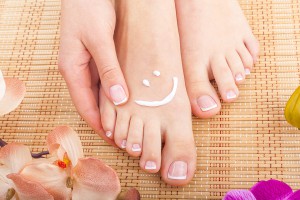 The middle of the summer. We keep wearing sandals and flip flops exposing our toes and heels. There’s no way out – we must care for feet. If regular skin care isn’t enough, medical pedicure is worth giving it a shot. During the procedure, you’ll get rid of problems such as ingrown toenails, callouses, blisters and corns. Is it worth-while? See it for yourself.
The middle of the summer. We keep wearing sandals and flip flops exposing our toes and heels. There’s no way out – we must care for feet. If regular skin care isn’t enough, medical pedicure is worth giving it a shot. During the procedure, you’ll get rid of problems such as ingrown toenails, callouses, blisters and corns. Is it worth-while? See it for yourself.
What is a medical pedicure procedure?
Medical pedicure is a treatment that aims at improving the appearance and condition of feet and toenails. A podiatrist is the only person who can perform the procedure. Podiatry is the field that deals with foot problems. It comprises:
- correction of various lesions on the plate of toenails, including the ingrown nail braces;
- the removal of inflammation around the toenails;
- foot skin care for diabetes patients, dry and cracked skin on feet;
- the removal of callouses and blisters;
- foot massage and reflexology;
- matching the right shoe insoles;
- the treatment of the following ailments: toenail fungus, bunions, cracked heels, excessive sweating.
Medical pedicure – who’s going to make the most of it?
The procedure brings the best results for people who:
- do sports and live an active lifestyle,
- spend most of the day standing or in an uncomfortable position,
- work in conditions which expose feet to over-sweating,
- are overweight or obese,
- suffer from diabetes and are exposed to the risk of its side effect – diabetic foot,
- have a recurring problem with callouses, corns, ingrown toenails.
What does the medical pedicure procedure look like?
The first stage focuses on the hydro-salt treatment – a foot bath in water enriched with salt and herbal solution which is composed of Dead Sea salt, urea, lavender, melissa, thyme and oak bark. This lets the doctor moisturise and soften the skin, and alleviate all irritations. Next, the podiatrist evaluates the state of the patient’s feet and chooses the suitable treatment. In case of some alarming lesions, the patient is immediately directed to specialized treatment. On the other hand, superficial blemishes (calloused epidermis or corns) can be removed with nippers, files and drill machines. Then, the podiatrist applies appropriate products and gives you a foot massage, as well as advises on foot skin care.
How a podiatrist removes callouses and blisters?
Callouses and blisters are the most common lesions in the foot area. They are caused by wearing uncomfortable shoes, foot skin disorders, improper skin care, wrong foot and toe placement, obesity and diabetes. If you’re also bothered by such imperfections, the medical pedicure is a must. Skin care using anti-sweat and anti-fungal creams as well as salt or urea baths are effective. The prevention is the key thing and it involves:
- every-day massage and foot care,
- using exfoliating products at least twice a month,
- wearing comfy, flat shoes,
- using absorbent insoles.
Medical pedicure – effects
The results of the medical pedicure are immediate. Still, we must care for feet with proper products and accessories to keep the effects: an instant feeling of relief, smoothed and moisturised foot skin, healthy toenails, removal of all foot imperfections, relief for the foot bones, joints and ligaments.







Leave a Reply